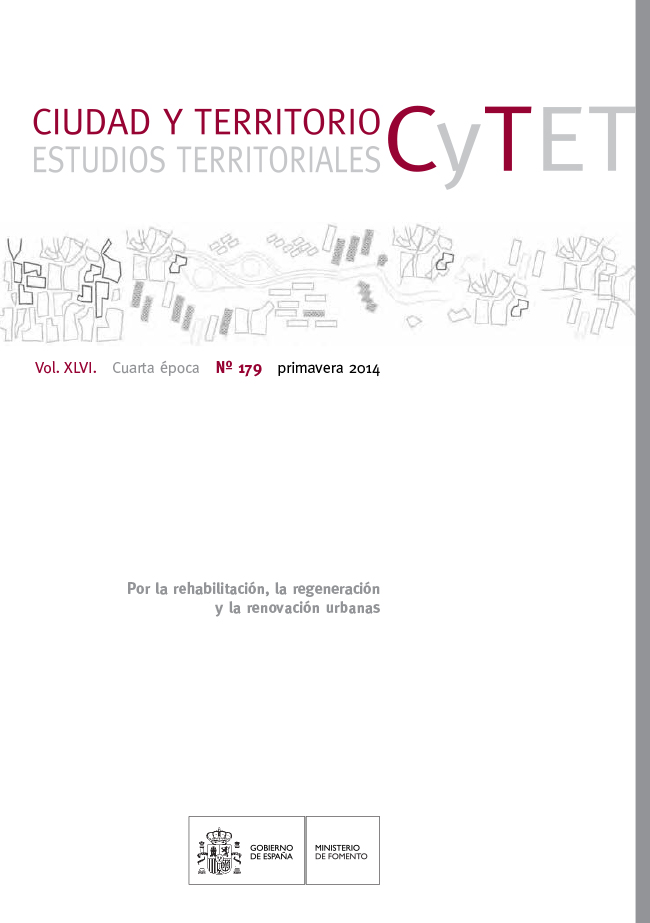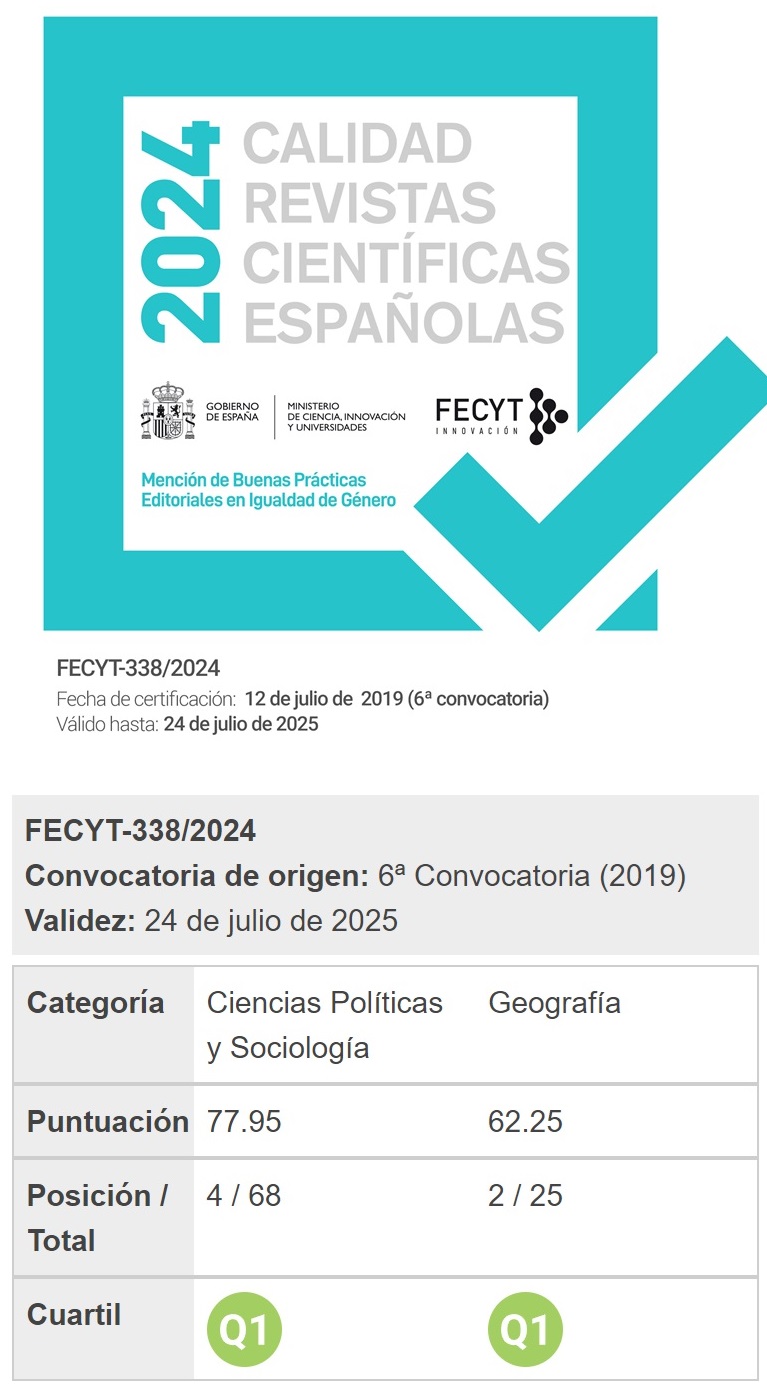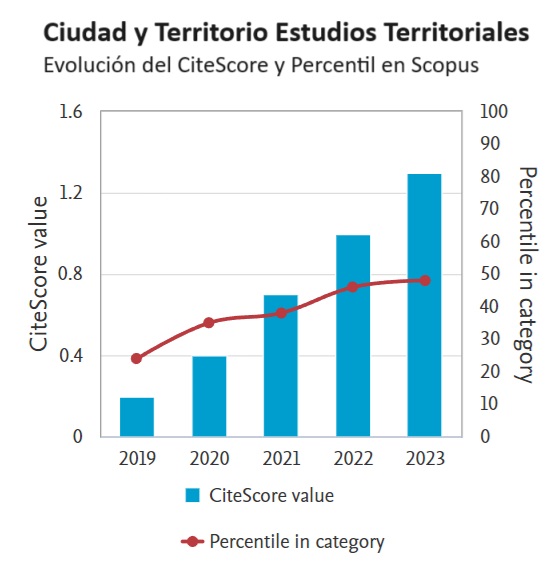Regeneración urbana integrada en 2014: nada nuevo bajo el sol y ¿Qué pasa con España?
Palabras clave:
Regeneración urbana integrada, Unión Europea, EspañaResumen
En 2014 los responsables políticos de muchos países se enfrentan a la
cuestión de cuál es la mejor forma de ejecutar la regeneración urbana integrada en un
periodo de austeridad económica y financiera. Pero no hay nada nuevo bajo el sol.
Esta pregunta se ha realizado muchas veces en muchos países durante las dos últimas
décadas. No obstante, ahora es muy importante en el ámbito europeo ya que las
propuestas de la Comisión Europea para el periodo de programación de 2014 a 2020
subrayan su intención de hacer un mayor esfuerzo para promover los programas urbanos
en el futuro. No obstante, los buenos resultados de las políticas y fondos europeos
y si aportan valor añadido dependerá de la forma en que los Estados miembros
los utilicen. El presente artículo explora las expectativas de éxito. Pregunta qué sabemos
sobre las dificultades de ejecutar la regeneración urbana integrada ¿Cuál ha sido
la experiencia en otros países? ¿Cuáles son los mensajes clave del pasado que deberían
guiar a los responsables políticos en el futuro? El objetivo de este artículo es
responder a las siguientes cinco preguntas ¿Qué es la regeneración urbana integrada?
¿Qué método funciona a la hora de ejecutarla? ¿Cuáles son los mensajes políticos
clave para el futuro? ¿Cuáles son las repercusiones para la Comisión Europea? ¿Cuáles
son las repercusiones para España?
Descargas
Descargas
Publicado
Cómo citar
Número
Sección
Licencia
Derechos de autor 2014 Michael Parkinson CBE

Esta obra está bajo una licencia internacional Creative Commons Atribución-NoComercial-SinDerivadas 4.0.
Sin perjuicio de lo dispuesto en la legislación vigente sobre Propiedad Intelectual, y conforme a la misma, el/la los/las autor/a/es/as que publiquen en CyTET cede/n a título gratuito, de modo no exclusivo y sin límite temporal al Ministerio de Transportes, Movilidad y Agenda Urbana los derechos para difundir, reproducir, comunicar y distribuir en cualquier formato actual o futuro, en papel o electrónico, la versión original o derivada de su obra bajo licencia de Creative Commons Reconocimiento-NoComercial-SinObraDerivada 4.0 Internacional (CC BY-NC-ND 4.0), así como para incluir o ceder a terceros la inclusión de su contenido en índices, repositorios y bases de datos nacionales e internacionales, con referencia y reconocimiento en todo caso de la autoría del mismo.
Además, al realizar el envío, el/la los/las autor/a/es/as declara/n que se trata de un trabajo original en el que se reconocen las fuentes que han sido utilizadas en su estudio, comprometiéndose a respetar la evidencia científica y a no modificar los datos originales para verificar o refutar una hipótesis de partida; que el contenido esencial del mismo no ha sido publicado previamente ni se publicará en ninguna otra obra o revista mientras esté en proceso de evaluación en la revista CyTET; y que no se ha remitido simultáneamente a otra publicación.
Los autores deben firmar un Formulario de Cesión de Derechos, que les será enviado desde la Secretaría de CyTET una vez se acepte su artículo para ser publicado.
Con el objetivo de favorecer la difusión del conocimiento, CyTET se adhiere al movimiento de revistas de Open Access (OA) y entrega la totalidad de sus contenidos a diversos índices, repositorios y bases de datos nacionales e internacionales bajo este protocolo; por tanto, la remisión de un trabajo para ser publicado en la revista presupone la aceptación explícita por parte del autor/a de este método de distribución.
Se anima a las/os autoras/es a reproducir y alojar sus trabajos publicados en CyTET en repositorios institucionales, páginas web, etc. con la intención de contribuir a la mejora de la transferencia del conocimiento y de la citación de dichos trabajos.








 Enlace a CyTET en Linkedin
Enlace a CyTET en Linkedin